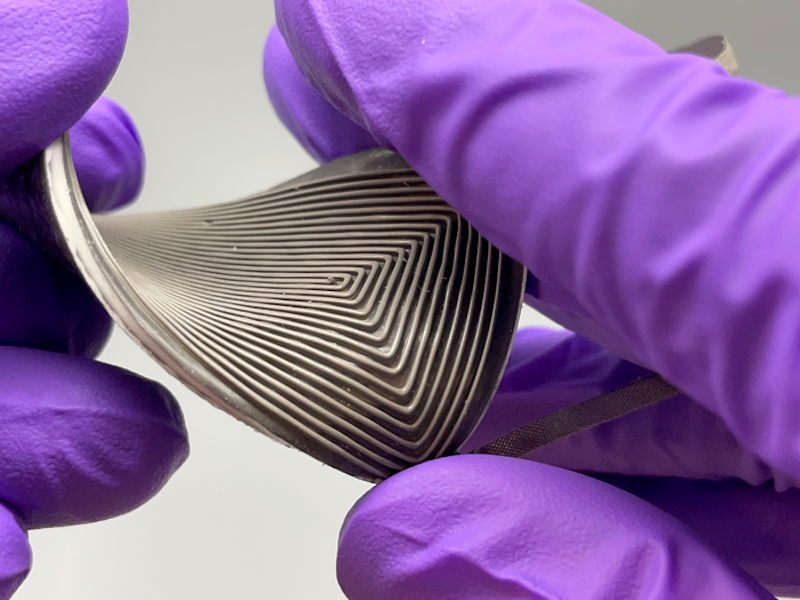
Harvest thermal energy to power wearable electronics
Wearable electronics, from health and fitness trackers to virtual reality headsets, are part of our everyday lives. But finding ways to continuously power these devices is a challenge.
Researchers have developed an innovative solution: the first-of-its kind flexible, wearable thermoelectric device that converts body heat to electricity. This device is soft and stretchable, yet sturdy and efficient—properties that can be challenging to combine.
To create these flexible devices, the researcher’s 3D printed composites with engineered functional and structural properties at each layer.
The filler material contained liquid metal alloys, which provide high electrical and thermal conductivity. These alloys address limitations in previous devices, including an inability to stretch, inefficient heat transfer and a complex fabrication process.
The team also embedded hollow microspheres to direct the heat to the semiconductors at the core layer and reduce the weight of the device.
Even after more than 15,000 stretching cycles at 30% strain, the researchers' prototype device remains fully functional, a highly desirable feature for wearable electronics and soft robotics. The device also shows 6.5 times increase in power density compared to previous stretchable thermoelectric generators.
The researchers showed that they could print these devices on stretchable textile fabrics and curved surfaces, which suggests that future devices could be applied to clothing and other objects.
 English
English Arabic
Arabic


